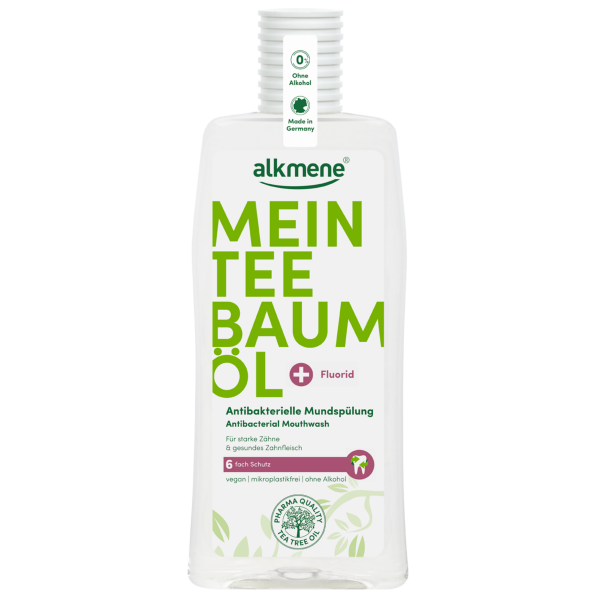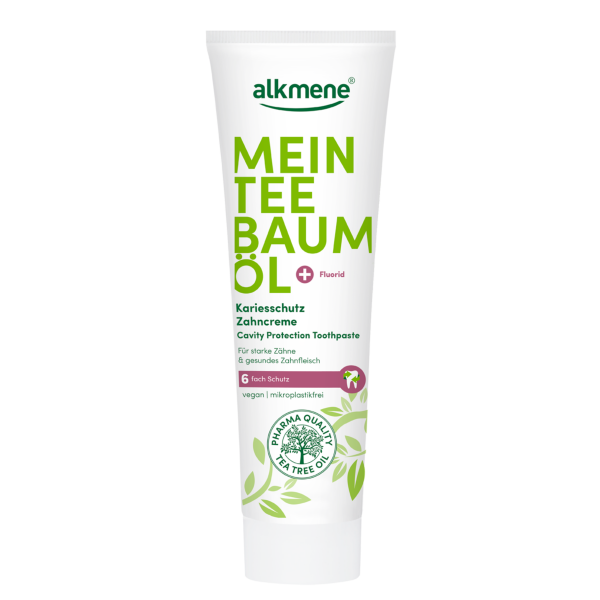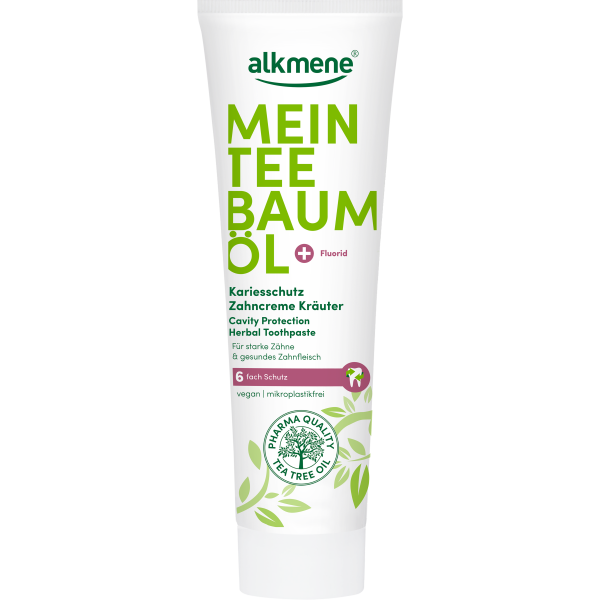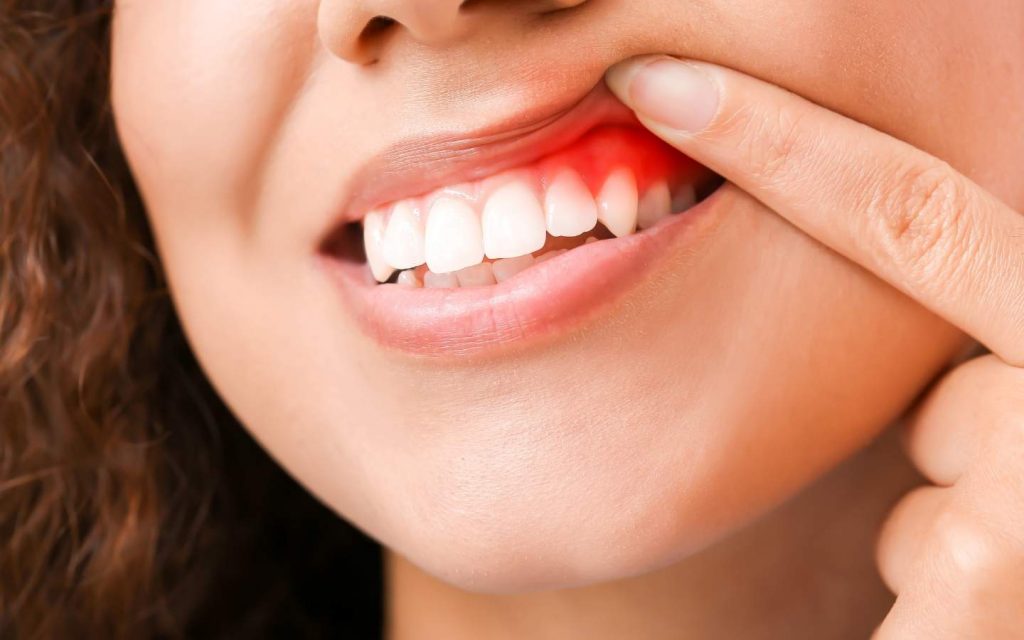
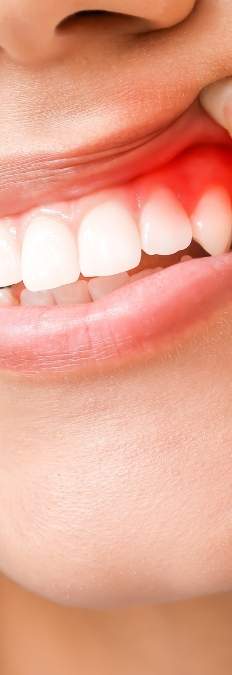

This article has been reviewed by:
Birgit Schlee
Dental hygienist
After brushing your teeth, do you notice red discoloration in the toothpaste you spit out? Your gums are red and swollen, even bleeding after brushing? All these are symptoms of gingivitis, popularly known as inflammation of the gums.
You are not alone with this problem, it is estimated that around 95% of Germans suffer from localized gingivitis. If left untreated, in the worst case a chronic inflammation can develop that can lead to tooth loss.
The good news: With a quick diagnosis and proper oral hygiene, gum inflammation usually disappears within a few weeks!
What is gingivitis and how does it develop?
Gum inflammation, also called gingivitis, is an inflammatory change of the gums. In most cases, gingivitis is caused by poor oral hygiene.
After eating, bacteria form a dental plaque, also called plaque. If this is not removed by regular and thorough oral hygiene, it solidifies in the form of tartar. Here, bacteria find optimal breeding ground by being protected from the defenses of the immune system. By metabolizing food residues, these bacteria produce toxins, aggressive acids and toxins that penetrate the crevice between the tooth and the gum.
Our immune system reacts to this attack with an inflammation: gingivitis.
Causes and risk factors of gingivitis
Gum inflammation is not always caused by a lack of oral hygiene; brushing the teeth too intensively can also cause gum inflammation.
Too much pressure can injure the gums and provide a surface for bacteria to colonize. Other mechanical irritants that can bring about gingivitis include overhanging fillings or uneven crown margins.
Apart from mechanical and bacterial action, several factors promote the likelihood of bacterial gingivitis.
Risk factors range from:
- genetic predisposition and hormonal changes, such as puberty or pregnancy
- to alcohol and nicotine consumption and vitamin C deficiency
- to diseases such as metabolic disorders, diabetes mellitus and auto-immune disease
Symptoms of gingivitis
Especially at the beginning of gingivitis, there is no pain. This is one of the reasons why gingivitis is often overlooked and underestimated. Gingivitis often becomes visible through visible traces of blood when brushing teeth and biting off hard foods.
Common symptoms for gingivitis are:
- persistent bad breath
- bleeding gums
- swollen, reddened gums
Chronic disease progression can lead to receding gums and exposure of the tooth necks. This leads, among other things, to toothache and strong bad breath. In particularly severe cases, oral mucosa inflammation, swelling of the surrounding lymph nodes and pus formation under the gums may also occur.
Treatment of gingivitis
The sooner gingivitis is detected and treated, the better! If chronic inflammation occurs, it can spread from the gums to the jawbone and develop into periodontitis, an inflammation of the entire periodontium. In the worst case, this can thus lead to loosening and tooth loss.
The most important measure for the treatment and prevention of gingivitis is thorough and regular oral hygiene. With good dental and oral hygiene, the inflammation can usually recede within a few weeks. But what constitutes good oral hygiene?
Good oral hygiene consists of:
- Brushing your teeth 2x a day (If you want to know how to brush your teeth properly read this post)
- Cleaning the interdental spaces 1x a day
- Supplementary mouth rinses
- Regular check-ups at the dentist with plaque/calculus removal and professional dental cleanings as needed
The optimal treatment and prophylaxis of gingivitis can be divided into self-treatment and dental treatment.
Thorough cleaning of the teeth is essential for treatment at home
The basis of good oral hygiene is regular brushing with:
- a soft to medium-hard toothbrush
- little pressure
- and a toothpaste without aggressive ingredients
When it comes to toothpaste, it is advisable to use products containing fluoride, which protect against the formation of plaque and sugar acids without overstimulating the gums.
However, only 70% of the tooth surface is reached by brushing alone. In order to combat plaque and bacteria formation in the long term, however, the interdental spaces and the gumline must also be cleaned. Depending on your preferences, you can use dental floss, dental sticks or an interdental brush to clean the interdental spaces.
In addition to mechanical cleaning, a mouth rinse can further reduce bacterial plaque, prevent inflammation and reach precisely those areas that remain unreached by toothbrush and floss.
Dental expert Birgit Schlee is also convinced of mouth rinses:
A mouth rinse is a very important and valuable addition to toothpaste and the like to effectively prevent caries and gingivitis. It is also ideal for aftercare following periodontal therapy to ensure the success of the treatment.
Here, too, fluoride-containing and dentally certified products are particularly recommended, as they clean inflamed gums, interdental spaces and, if necessary, exposed tooth necks without causing additional irritation.
Chamomile against gingivitis
A well-tried recommendation is the popular medicinal plant chamomile. Even a simple chamomile tea can provide you with relief. If you like it particularly natural, you can use dried chamomile blossoms instead of ready-made tea bags. You need about three heaped teaspoons of it. Brew them in a cup of hot water, let the tea steep briefly and rinse your mouth thoroughly with the cold liquid after it has cooled.
A little more elaborate is the preparation of a special tincture for rinsing the oral cavity. To make it, fill a glass halfway with fresh chamomile flowers and pour 42-percent fruit schnapps over them until everything is covered. Leave the jar in the warmth for six to eight weeks, shaking it from time to time. Once everything has steeped long enough, you can pour the decoction through a cloth and bottle the tincture in a dark bottle.
In case of gum inflammation, you can then take a teaspoon of the liquid into your mouth and rinse thoroughly for a few seconds. Note that you do not swallow the tincture, but always spit it out. This process can be repeated several times a day.
Dental treatments differ depending on the severity of gingivitis
To prevent gingivitis in the long term, regular check-ups and dental surface cleanings are essential. Removing stubborn plaque and plaque as well as polishing the tooth surface prevents harmful bacteria from re-colonizing.
In severe stages of inflammation, antibiotics are necessary to soothe the gums and allow healing to occur. In particularly severe and chronic forms of inflammation of the gums and jawbone, also known as periodontitis, surgical intervention may be necessary.
![]()
